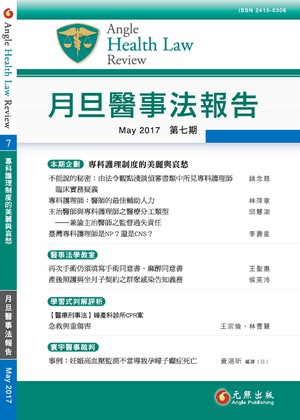兩岸醫療糾紛ADR機制之比較研究——以仲裁為例【月旦時論】 試閱
A Comparison Research of Applying ADR into Medical Malpractice in the Cross-Straits-An Example of Arbitration
本文主旨在於比較兩岸仲裁機制應用於醫療糾紛領域之異同。本文觀察中國廣東省深圳市,其在處理醫療糾紛之不同方式選擇上,選擇仲裁人數已高過於訴訟。根據深圳市經驗,仲裁具備強制力、效率與專業等優勢,而面對醫病間專業知識與資訊之落差,須藉由客觀、中立之第三方介入來處理耗時與複雜之醫療糾紛。臺灣在尚未將醫療糾紛予以專法立法之前,針對醫療糾紛,在裁判外紛爭解決模式方式之選擇上目前係以司法調解為推廣重點。借鏡深圳市推行仲裁作為醫療糾紛解決選項之經驗,本文檢視臺灣仲裁法與專業人才準備,認為臺灣具有發展仲裁作為醫療糾紛裁判外紛爭解決模式方式之一之潛力,並建議明定於未來專法立法中。而社會上對於仲裁之信賴度同時皆為兩岸的重大考驗。
The theme of this article is to compare arbitration mechanism applied in the medical malpractice area in the cross-straits. Observing the Shenzhen City in Guangdorg, China, among different choices of dealing with medical malpractices, those who choose arbitration is higher than litigation. Obviously, according to experiences applied in the Shenzhen City, arbitration’s advantages include enforcement, efficiency, and professionalism. Facing the gap between physicians and patients regarding to professional knowledge and information, an objective and neutral third party intervened to deal with time consuming and complex medical malpractices is necessary. Before legislating medical malpractices as a special law, judicial mediation is promoted currently among alternative dispute resolution (ADR) choices to deal with medical malpractices. Lesson learning from the Shenzhen City about applying arbitration as one option of dealing with medical malpractices, this article examines Taiwan’s “the Arbitration Law” and experts prepared, suggests that arbitration has potential to become one of the ADR methods and should be mentioned in the special law. Meanwhile, the level of trust to arbitration in the society is a great task to the cross-straits.
182-196






